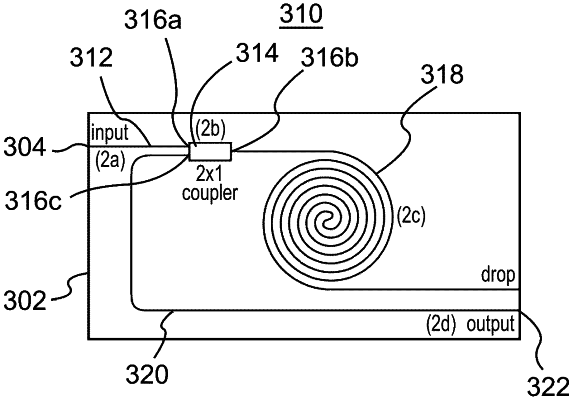| CPC G01J 3/4406 (2013.01) [G01J 3/0205 (2013.01); G01J 3/0218 (2013.01); G01J 3/10 (2013.01); G01N 21/65 (2013.01)] | 23 Claims |

|
1. A photonic integrated circuit (PIC) for Raman spectroscopy, the PIC comprising:
a semiconductor substrate;
a multi-port optical coupler, integrated with the semiconductor substrate and having a first port, a second port, and a third port, to receive a Raman pump beam and fluorescence induced by the Raman pump beam in an optical fiber at the first port, and to output the Raman pump beam and the fluorescence at the second port;
a sample waveguide, integrated with the semiconductor substrate and coupled to the second port, to guide the Raman pump beam and the fluorescence in a first direction, to excite a sample in optical communication with the sample waveguide with the Raman pump beam via evanescent coupling, to receive a scattering signal from the sample in response to the excitation, and to guide the scattering signal in a second direction opposite from the first direction; and
an output waveguide, integrated with the semiconductor substrate and coupled to the third port of the multi-port optical coupler, to guide the scattering signal to a detector,
wherein the multi-port optical coupler has a first splitting ratio at a wavelength of the Raman pump beam and a second splitting ratio different than the first splitting ratio at a wavelength of the scattering signal.
|